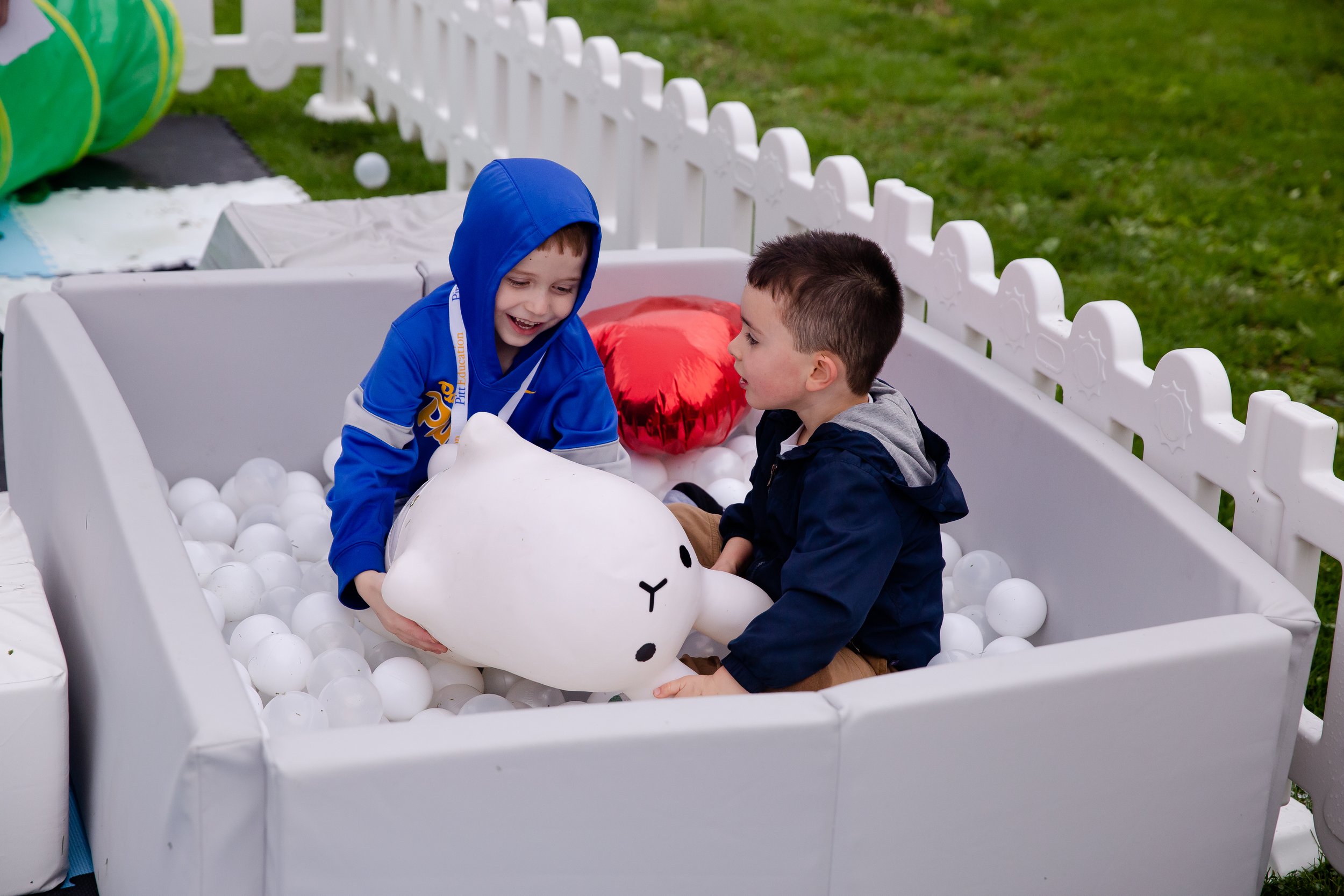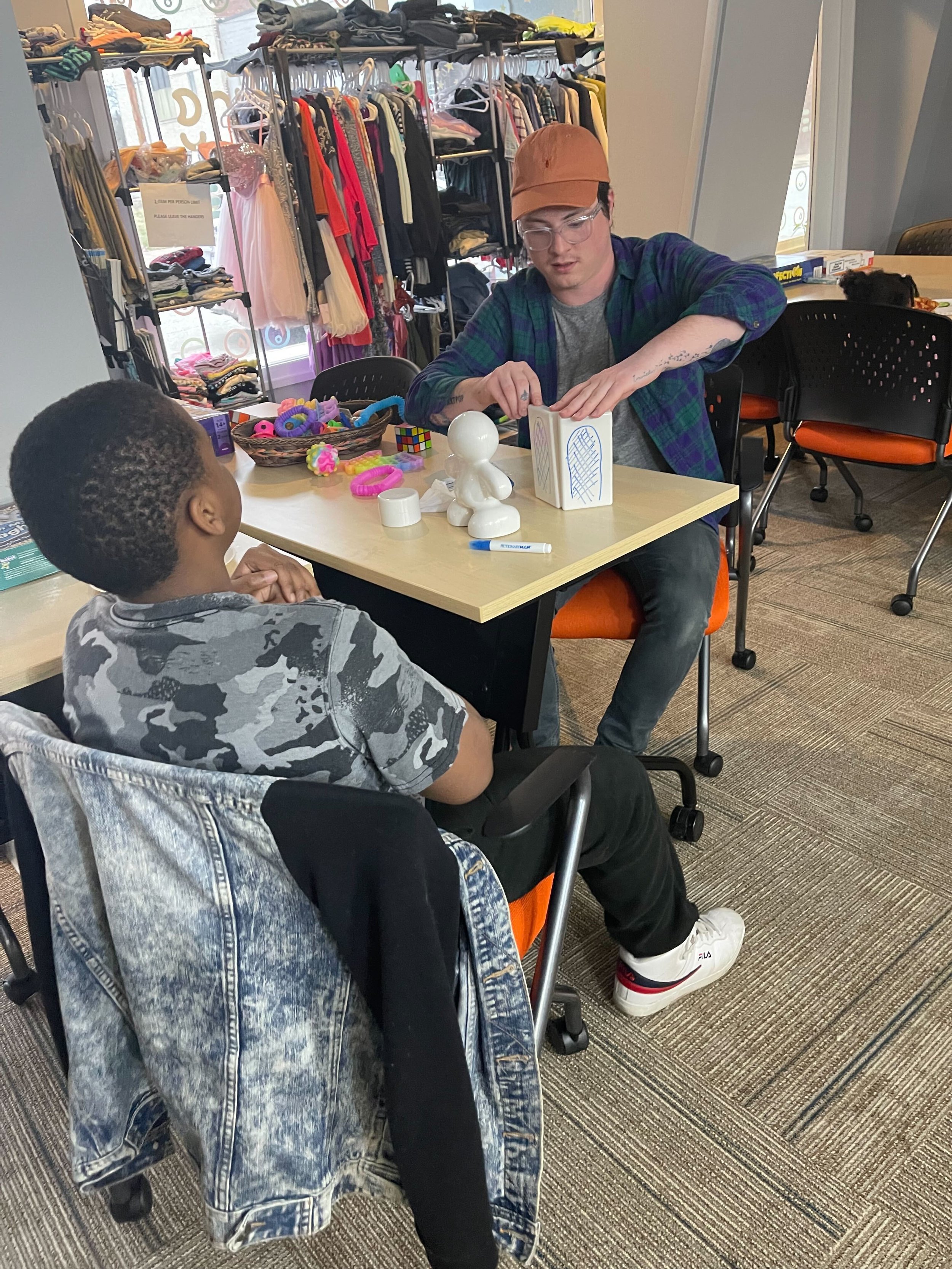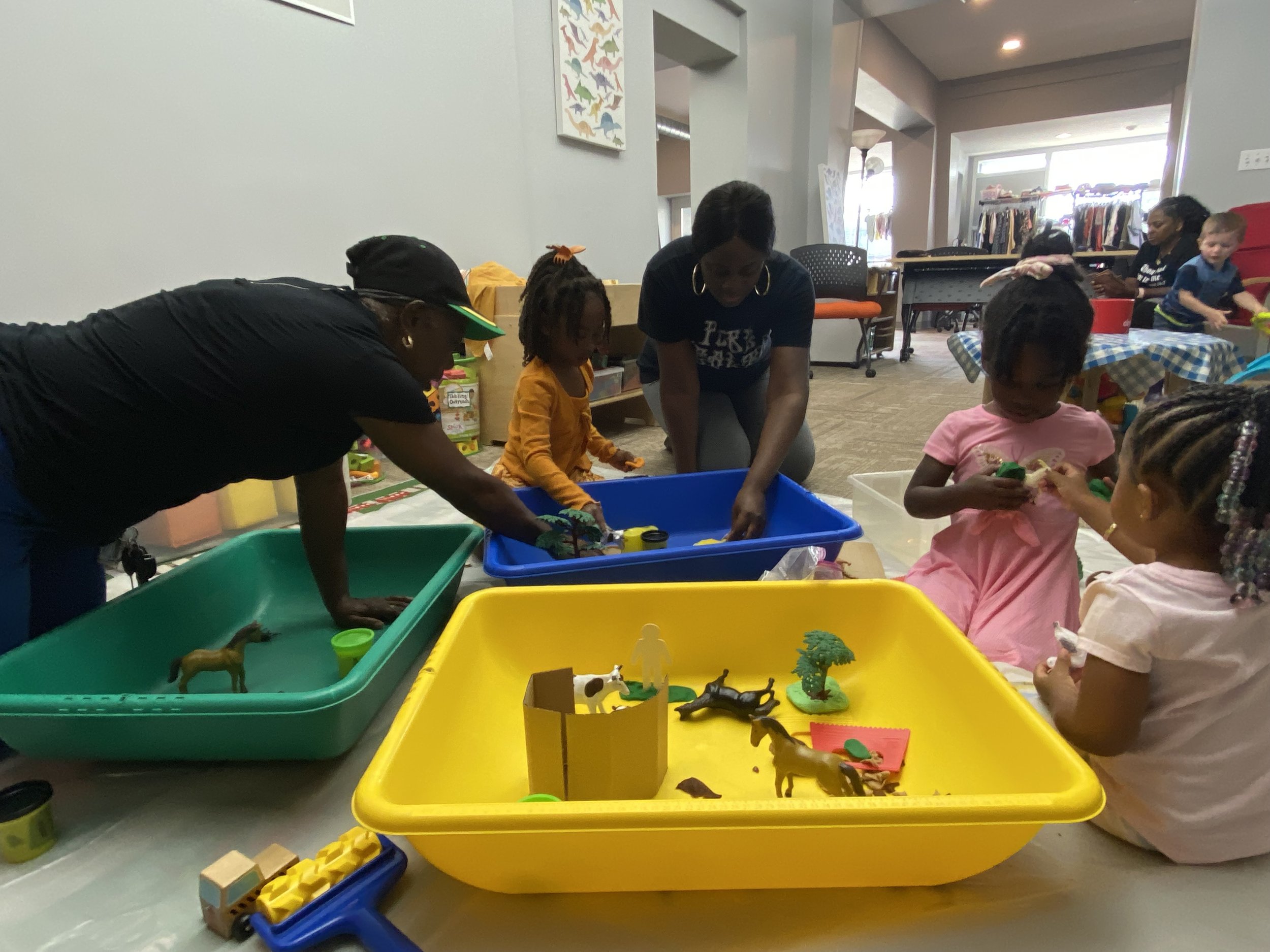
NEWS
March Playful Pittsburgh Partner Highlights
Playful Pittsburgh has many amazing partners across the city and each month we would like to take a moment to spotlight our tier 2 and 3 partners and all the work they doing to contribute to play equity.
Playful Pittsburgh has many amazing partners across the city and each month we would like to take a moment to spotlight our tier 2 and 3 partners and all the work they doing to contribute to play equity.
Pittsburgh Parks:
Pittsburgh Parks is a nonprofit organization that is committed to improving the quality of life for the people of Pittsburgh by restoring the park system to excellence in partnership with the government and the community.
As part of this work, Pittsburgh Parks Conservancy provides outdoor educational programming for all ages to forge connections between people and the parks. Play is an important feature of these programs, as we encourage people to relax, recreate, and unleash their imaginations. We believe providing opportunities for play in the parks enhances children’s—and adults’— sense of connection to the natural world.
How to Connect with Pittsburgh Parks:
To connect with Pittsburgh Parks, visit their website or connect with them on Instagram or Facebook.
The Fred Rogers Institute:
Fred Rogers established the Institute to work with current professionals to support their practice in the service of children and families, researchers looking to deepen their understanding of the important issues facing children.
The Fred Rogers Institute considers “the capacity to play” one of the six necessities of learning. In "Mister Rogers Talks with Parents," Fred Rogers and Barry Head introduce “play” as a fundamental element in a person’s ability to learn and grow.
This year, a dedicated group within the "Educators Neighborhood" program at the Fred Rogers Institute is exclusively focusing on the theme of play. This deliberate emphasis promotes collaborative endeavors in crafting and executing playful learning experiences, fostering a spirit of cooperation and breaking down professional barriers. The recognition of the significance of play for both educators and the children and families they serve enhances the establishment of profound and straightforward connections within the community.
How to Connect with The Fred Rogers Institute:
To connect with The Fred Rogers Institute, visit their website or connect with them on Instagram or Facebook.
Neighborhood North Museum of Play:
Neighborhood North is a children’s museum located in the Beaver Falls area with a mission to create a unique and vibrant center of intergenerational learning for the youngest members of our community, for their parents and grandparents and all who care for them, and to cultivate the curiosity and creativity of our future citizens.
Neighborhood North believes that play is essential for learning, creating, and connecting. Play helps to promote trust, joy, and authenticity, and to break down barriers which leads to more honest, resilient relationships within our organization.
How to Connect with Neighborhood North Museum of Play:
To connect with Neighborhood North Museum of Play, visit their website or connect with them on Instagram or Facebook.
Playful Vendors and Volunteers Needed for Ultimate Play Day
Playful Pittsburgh is seeking vendors and volunteers for Ultimate Play Day 2024.
Playful Pittsburgh is seeking vendors and volunteers for Ultimate Play Day 2024.
Ultimate Play Day, hosted by Playful Pittsburgh, Trying Together, and CitiParks, is a celebration of playfulness for people of all-ages.
The event will be held at Riverview Park in the Northside on Saturday, May 18, from 1 to 4 p.m. as part of Remake Learning Days - Southwestern PA in 2024.
Become a Playful Vendor
Ultimate Play Day aims to foster community connections and learning through playful activities.
If your organization would like to facilitate a playful activity at Ultimate Play Day, please fill out the vendor application form.
Consider how your activity could engage populations from various age ranges and encourage intergenerational play; consider what props you'll bring to facilitate fun; imagine an activity that encourages communication and relationship building. Special attention will be paid to organizations that submit interactive, playful ideas that do not involve strictly passing out literature or other informational handouts.
Volunteer
Playful Pittsburgh is in need of volunteers to help throughout the day. Assistance is needed for set up, registration, game and playground support, teardown, and more. View descriptions of each volunteer role.
Anyone interested in volunteering can fill out the sign up form and indicate the role that they are interested in.
More Information
If you have any questions, contact Adam James Zahren, Program Director, Playful Pittsburgh at adam@tryingtogether.org.
Join Playful Pittsburgh at NFL PLAY 60
Children of all ages are invited to get up and get active with the Western Pennsylvania Sports Museum for a football-fueled day of fun.
Children of all ages are invited to the NFL PLAY 60 Training Camp at the Western Pennsylvania Sports Museum on Saturday, February 3 from 10 a.m. to 2 p.m..
About NFL PLAY 60
Gear up for an action-packed experience at the NFL PLAY 60 Training Camp, sponsored by DICK’S Sporting Goods, on Saturday, Feb. 3! Children of all ages are invited to get up and get active with the Western Pennsylvania Sports Museum for a football-fueled day of fun.
Playful Pittsburgh will be at the event with oversized games for all to enjoy. Other activities include:
A mini-NFL Combine, where you can test your speed in the 40-yard dash, assess your passing accuracy. and challenge your agility in a series of quick-hitting drills
Physical challenges located throughout the Sports Museum
A touchdown celebration contest
This event is presented in partnership with the Pittsburgh Steelers and NFL PLAY 60, the National Football League’s health and fitness campaign to encourage young fans to be active for at least 60 minutes each day.
Register
All NFL PLAY 60 Training Camp activities and access to History Center exhibitions are free for children ages 17 and younger. Parents and caregivers are invited to be spectators and cheer on their players as they participate.
Regular admission applies for adult visitors. For additional questions, please contact programs@heinzhistorycenter.org.
Advance registration is encouraged, but not required. Register.
Westinghouse Park Selected as One of 19 Nature Everywhere Communities
The Nature Everywhere Initiative aims to increase equitable access to a healthy, natural world by working to reduce disparities in housing, employment, food, health, and education.
The City of Pittsburgh, in partnership with the Outdoor Inclusion Coalition, Westinghouse Academy, Homewood Children’s Village, and Operation Better Block, has been selected as one of 19 U.S. Nature Everywhere Communities by The Children & Nature Network, the National League of Cities, and KABOOM!.
About
The Nature Everywhere Initiative aims to increase equitable access to a healthy, natural world by working to reduce disparities in housing, employment, food, health, and education. Nature Everywhere Communities will receive two years of strategic planning, technical support, and start-up funding to develop and implement community-driven plans for connecting children and families to nature-based experiences and learning.
The City will focus its funding on developing Westinghouse Park through a community process that elevates community safety, youth leadership, and school partnerships. They are looking to prioritize equitable access to nature for Black youth in East Pittsburgh by engaging the community, particularly Black youth, in the design of local parks. With a current focus on Westinghouse Park, the team plans to target its efforts in creating new models that engage local communities and youth in park development, using the existing park development tax.
As a first step, the East End Pittsburgh team joined eight other communities for a Nature Everywhere Vision Lab in Austin, Texas in November 2023, to explore proven nature connection strategies and connect with technical assistance experts from the Children & Nature Network, the National League of Cities, and KABOOM!. Over the next two years, the Pittsburgh team will:
Engage youth and community residents in creating visions for equitable access to nature
Map community stakeholders, assets, and gaps
Conduct funding and policy scans
Identify the best nature connection strategies for the Pittsburgh community
Build and deepen regional partnerships
Develop and begin implementing an outdoor inclusion and access plan
Throughout the process, East End Pittsburgh and other Nature Everywhere community teams will have access to a national peer learning network; technical assistance; case-making research; resources, case studies, and planning tools; seed grants of up to $50,000; and eventually, access to larger catalytic grants for implementation. Nature Everywhere partners (Children & Nature Network, National League of Cities, and KABOOM!) will also help communities track outcomes and communicate the impact of their work both locally and nationally.
For more details, read a press release issued by the City of Pittsburgh.
Winter Play
Winter offers a unique set of activities that can be enjoyed despite the cold weather.
Ways to Play During Winter
Winter offers a unique set of activities that can be enjoyed despite the cold weather. Here are some ways to play during the winter:
Winter Sports:
Skiing and Snowboarding: Head to a nearby ski resort for some downhill fun.
Ice Skating: Find a local outdoor or indoor rink for ice skating.
Snowshoeing: Explore snowy landscapes with snowshoes on your feet.
Build a Snowman or Snow Sculptures:
Get creative with the snow by building a classic snowman or more elaborate snow sculptures.
Sledding:
Find a hill and go sledding with friends or family. It's a simple and thrilling winter activity.
Winter Hiking:
Bundle up and take a winter hike through a snow-covered trail or forest.
Ice Fishing:
If you enjoy fishing, try ice fishing on a frozen lake or pond.
Winter Festivals:
Attend local winter festivals, where you can enjoy activities, food, and entertainment.
Indoor Activities:
Embrace indoor sports like rock climbing, indoor trampolining, or join a winter sports league.
Winter Photography:
Capture the beauty of winter landscapes with photography. Snow-covered landscapes and frosty trees make for great shots.
Winter Camping:
For the more adventurous, consider winter camping. Just make sure to bring appropriate gear and clothing.
Hot Springs or Sauna:
Relax and warm up in hot springs or saunas after a day in the cold.
Winter Barbecue:
Grill up some winter-themed foods and have a barbecue with friends. Just make sure to dress warmly!
Visit Museums or Indoor Attractions:
Explore museums, art galleries, or indoor attractions to escape the cold while still having an enjoyable time.
Winter Bonfire:
Build a safe winter bonfire in your backyard or a designated area. Roast marshmallows and enjoy the warmth.
Winter Movie Night:
Cozy up indoors with some hot cocoa and have a winter-themed movie night with friends or family.
Holiday Lights Tour:
Take a drive or walk around neighborhoods to enjoy the festive holiday lights and decorations.
Remember to dress appropriately for the weather and stay safe while enjoying winter activities. Whether you prefer the thrill of outdoor sports or the warmth of indoor gatherings, there are plenty of ways to have fun during the winter months.
Benefits of Winter Play
Engaging in play during the winter months can offer a variety of physical, mental, and social benefits. Here are some advantages:
Physical Exercise:
Winter play often involves physical activities such as skiing, snowboarding, ice skating, sledding, and snowshoeing. These activities help maintain fitness levels and improve cardiovascular health.
Vitamin D Intake:
Despite the cold, exposure to natural sunlight during the winter is essential for getting Vitamin D. Outdoor winter play allows for exposure to sunlight, which helps the body produce this vital vitamin.
Mood Enhancement:
Physical activity triggers the release of endorphins, which are known as "feel-good" hormones. Playing in the winter can contribute to improved mood and reduced feelings of stress and anxiety.
Improved Sleep:
Regular physical activity, especially during the colder months, can contribute to better sleep quality. Adequate sleep is crucial for overall well-being and immune system function.
Boosted Immune System:
Exposure to cold weather and engaging in outdoor activities can stimulate the immune system. As long as precautions are taken to stay warm, being in the cold can potentially strengthen the body's ability to fight off illnesses.
Enhanced Creativity:
Building snowmen, creating snow sculptures, or even participating in winter sports can stimulate creativity. Engaging in imaginative play fosters cognitive development and problem-solving skills.
Social Interaction:
Winter play often involves group activities, providing opportunities for social interaction. Whether it's a game of ice hockey, a snowball fight, or skiing with friends, these activities promote social bonds and a sense of community.
Stress Reduction:
Outdoor play in a winter wonderland can be a serene and calming experience. The peacefulness of snowy landscapes and the beauty of winter scenery can contribute to stress reduction and mental relaxation.
Adaptability and Resilience:
Facing the challenges of winter weather, such as navigating snowy terrain or learning new winter sports, helps build adaptability and resilience. Overcoming obstacles in a winter setting can translate to increased confidence in other areas of life.
Appreciation for Nature:
Winter play allows individuals to connect with and appreciate the beauty of nature in its winter form. This connection fosters a sense of environmental awareness and stewardship.
Family Bonding:
Winter activities often provide opportunities for families to spend quality time together. Whether it's building a snowman or enjoying a winter hike, these shared experiences contribute to stronger family bonds.
Enjoyment of Seasonal Traditions:
Winter play often aligns with seasonal traditions and holidays. Participating in these activities can contribute to a sense of joy, nostalgia, and connection to cultural or family traditions.
Remember to prioritize safety when engaging in winter play by dressing appropriately for the weather, staying hydrated, and being aware of potential risks associated with cold temperatures.
Indoor Play and Why It's Fun for Everyone
What is indoor play and why is it important for everyone? Learn about indoor play and the developmental and personal benefits that indoor play fun provides for all ages.
What is indoor play?
Indoor play refers to recreational and leisure activities that take place within the confines of indoor spaces, such as homes, community centers, gyms, or dedicated indoor play areas. Indoor play activities vary from video games to arts and crafts, as well as activities such as board games, puzzles and going to an indoor playground. widely. Indoor play caters to all age groups, cultural backgrounds, and interests.
Research shows one of the benefits of indoor play for everyone is that it encourages creativity and critical thinking. Activities like crafts, reading stories, and art projects support being inventive, where board games encourage problem-solving. Even video games such as Wii Fit and Just Dance promote physical activity.
Other benefits of indoor play include a lower risk of injury and a convenient alternative for days of inclement outdoor weather. Indoor playgrounds, for instance, greatly reduce the risk of danger and injury through soft matting or foam in case of any falls. Some companies even sell indoor gyms for your home at a range of sizes for all ages.
Indoor play for children
Playing indoors can offer a variety of benefits for children. While outdoor play is important for physical activity and exposure to nature, indoor play has its own advantages. Some benefits of children playing indoors include:
Safety: Indoor play environments provide a controlled, safe space for children to play, reducing the risk of accidents or injuries.
Educational Opportunities: Many indoor activities, such as board games, puzzles, and educational toys, offer learning opportunities that stimulate cognitive development and creativity.
Consistency: Indoor play spaces, such as playrooms or family child care centers like The Homewood Early Learning Hub & Family Center, offer consistent play opportunities throughout the year, providing a playful routine for children.
Creativity and Imagination: Indoor environments often encourage imaginative play. Children can create their own games, stories, and scenarios using toys, art supplies, or household items.
Quiet Time: Indoor play can include quieter activities such as reading, drawing, or playing with building blocks, which provides a sensory and physical break from more active and noisy outdoor play.
Accessibility: Indoor play spaces are often more accessible, especially for families who may not have easy access to outdoor recreational areas.
A balanced approach to play, incorporating both indoor and outdoor activities, is ideal for a child's overall development. A mix of various environments and play options can provide a well-rounded and enriching, playful experience for children.
Indoor play for teens
Teenagers can derive various benefits from engaging in indoor activities. Indoor play and pursuits offer advantages for teens (ages 13 through 18), particularly in terms of cognitive, social, and skill development. Even video games and mobile games can provide developmental and cognitive benefits for teenagers. Here are some benefits of teens playing indoors:
Education: Indoor activities, such as reading, learning games, or creative projects, provide opportunities for continued education and skill development outside of typical learning spaces for teens.
Skill Development and Enhancement: Teens can develop specific skills indoors, such as playing musical instruments, coding, writing, or engaging in artistic pursuits, which can contribute to their personal growth and future opportunities.
Creativity and Innovation: Teens can explore their artistic talents, experiment with technology, or engage in problem-solving activities during indoor play sessions.
Development of Productive Hobbies: Pursuing indoor hobbies like painting, writing, cooking, or crafting can be both enjoyable and productive. These hobbies can serve as a healthy outlet for self-expression, stress relief, and overall mental wellness.
Social Interaction: Indoor activities, including video games, board games, or collaborative projects, can facilitate social interaction for teens, and assist with developing and maintaining friendships.
It's important for teens to balance their time with outdoor activities, physical exercise, and face-to-face social interactions. Striking a balance between indoor and outdoor play contributes to an overall healthy lifestyle for teenagers.
Indoor play for adults and seniors
While the concept of "play" may be more commonly associated with children, adults and seniors can also benefit significantly from engaging in indoor activities that promote relaxation, creativity, and overall well-being. Benefits of indoor play for adults and seniors can look like the following:
Stress Reduction: Indoor play can serve as a powerful stress reliever. Engaging in enjoyable activities such as games, crafts, and reading can help adults unwind and reduce tension.
Mental Stimulation: Indoor activities such as puzzles or strategy games can provide mental stimulation, keeping adult and senior minds sharp and potentially reducing the risk of cognitive decline.
Social Interaction: Whether it's through board games, movie nights, or other shared experiences, these type of indoor activities contribute to social well-being for adults and seniors and develop stronger social bonds and camraderie amongst adult groups.
Personal Growth and Improved Mood: Learning new skills or taking up a hobby can contribute to personal growth and development for adults, which helps enhance self-esteem and provide a sense of purpose. Engaging in enjoyable indoor activities also releases endorphins, the body's natural mood lifters. This can lead to an improved overall mood and emotional well-being.
Adaptability: Indoor play can be easily adapted to various adult schedules and lifestyles. As adults, the common reason to not participate in plat is “there is not enough time in the day”. So incorporating a quick game, a creative project, or a longer hobby, adults can fit these activities into their daily routines.
It's important for adults to find a balance between work, responsibilities, and play. Incorporating indoor play into a routine can contribute to a more balanced and fulfilling lifestyle. Indoor play is a valuable aspect of adult well-being.
Indoor play is versatile and can be adapted to suit different preferences, ages, and environments. It provides opportunities for entertainment, learning, and social interaction within the comfort and safety of indoor spaces.
Resources on Indoor Play
Here are some resources and references on indoor play and activities, and the benefits that this play type provides:
Indoor vs. Outdoor Play - is one Better Than the Other?, Playground Centre
7 Benefits of Indoor Play for Children, LiggettVille
Why Playing Indoors Is Just as Important as Playing Outdoors, Indoor Playgrounds International
16 Indoor Group Games & Activities for Adults, TeamBuilding.com
Benefits of Indoor Activities for Older Adults, Samvedna Care
A Parent's Guide to Indoor Play Places in Pittsburgh, Macaroni KID









